Understanding the weather requires an observant eye. Ideally that observation is coupled with a familiarity with the natural world.
I can’t teach you to be more observant (except to say “slow down, take your time, and focus generally on your surroundings”), but I can teach you about the natural cues and signals that give away what the weather is thinking.
Why We Need to Read The Weather
I trust the weatherman as much as I trust a career politician, and that ain’t very far.
While television meteorologists can add some insight and a good idea on what you can expect, these professionals are also covering massive geographical areas.
Most of the time that is good enough but there will be situations where you can’t access your smartphone to see what the radar indicates.
These scenarios are often relatively mundane:
Your phone died
You’re in an area with no service
You’ve read conflicting reports for your area
You’re driving and have to rely on what you see
However in a SHTF scenario there is no more weatherman.
This is when your own skills become critical:
Interpreting a storm system formation is powerful knowledge when you’re exposed to the elements and can’t retreat to a place of comfort.
Weather knowledge is vital for establishing and maintaining your survival garden
Forecasting is vitally important for planning days and methods of travel.
Even the more far-flung weather indicators are valuable to know, information like the woolly bear caterpillar measurement of previous weather, or which frogs are singing (more on this later).
I know what date it is today, but if the world goes to hell I might not even know what month it is in a few years.
Far-out and in-your-face weather indicators are valuable.
Where to Look for Signs?
The answer to that is, “everywhere around you”.
From the obvious cues like the clouds and the color of the sunset, you can also look towards animals, plants, and insects for reliable information about the weather.
Read up on this and before long you won’t be predicting the weather, you’ll be reading it.
The Sky Itself
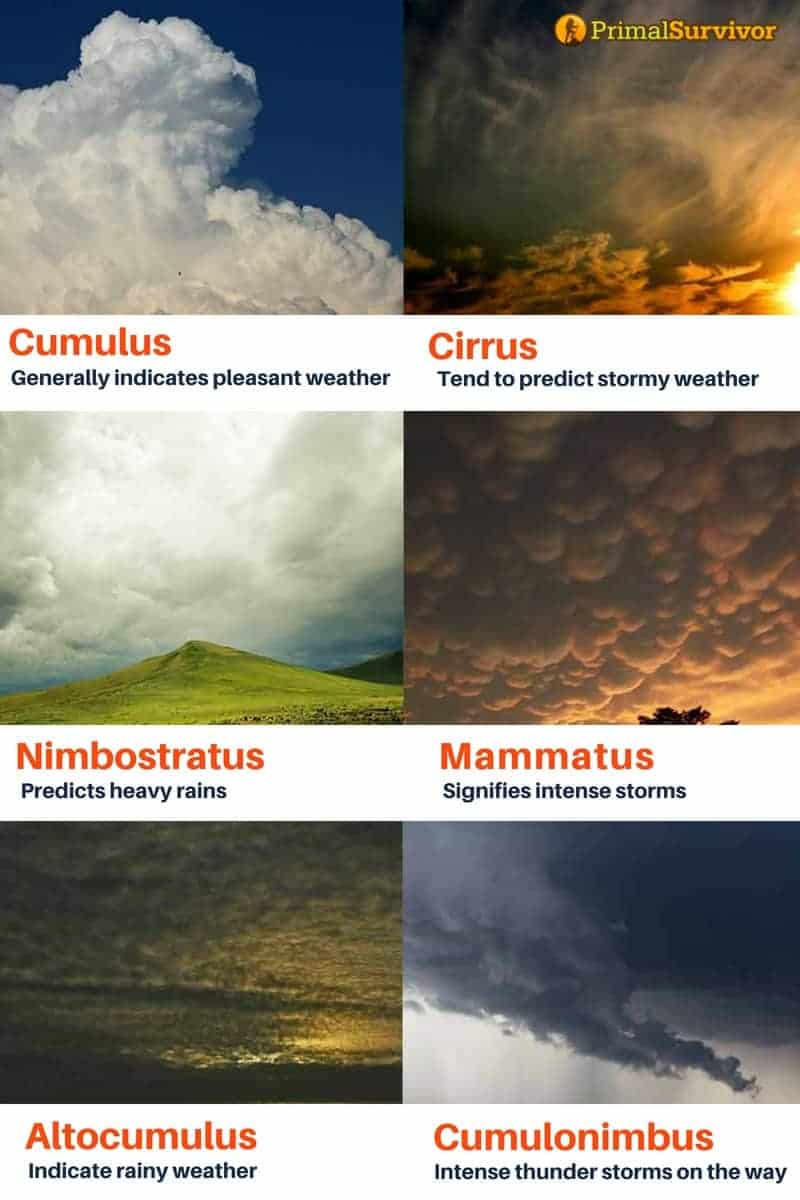
Free to use with link back and attribution.
Cloud Shape
Probably the most obvious method we have and by far the most reliable.
The clouds above give away a lot about the state of the weather and provide telltale clues about what’s likely to happen in the near future.
- Cumulus Clouds – Big, white, puffy clouds, like balls of cotton. Cumulus clouds tend to be present on fair and pleasant days. They indicate some pleasant weather, but can also suggest more rainy or stormy weather in the next day or two.
- Cirrus Clouds – My buddy calls these clouds “fish bones”, but I’ve also heard “mare’s tails”; what you’re looking for here are those light, wispy clouds the stretch across the sky. These tend to predict stormy weather, or at least rain, on the horizon.
- Nimbostratus Clouds – Massive masses of clouds that cover the sky and hang low and heavy, nimbostratus clouds signify heavy rains.
- Mammatus Clouds – Ever see these rolling, bubbling clouds? They look like the sky itself is boiling; they’re actually a form of thundercloud created when cold air circulates down from the top of the “anvil” and forms little “pouches” at the bottom of the thundercloud. Signifies intense storms on the horizon.
- Altocumulous Clouds – Otherwise known as “fish scales” these clouds tend to indicate rainy weather within 24 hours.
- Cumulonimbus Clouds – The big ol’ thunderstorm clouds. These are those giant clouds that tower skyward like enormous anvils. Their color ranges from white to black, and the darkness the color is the more likely they are bringing intense thunderstorms with them.
Cloud Position and Color
The position of the clouds in the sky itself indicate the likelihood of how the weather will behave; high clouds suggest more pleasant weather, while low-flying clouds generally indicate precipitation or stormy weather.
Colors in the sky can indicate the weather as well. Most of us are familiar with the saying, “Red sky at night, sailor’s delight. Red skies in morning, sailor take warning”, but what does that exactly mean?
According to the Library of Congress this proverb is explained with the following,
Red sky at night, sailors delight.
When we see a red sky at night, this means that the setting sun is sending its light through a high concentration of dust particles. This usually indicates high pressure and stable air coming in from the west. Basically good weather will follow.Red sky in morning, sailor’s warning.
A red sunrise can mean that a high pressure system (good weather) has already passed, thus indicating that a storm system (low pressure) may be moving to the east. A morning sky that is a deep, fiery red can indicate that there is high water content in the atmosphere. So, rain could be on its way.”
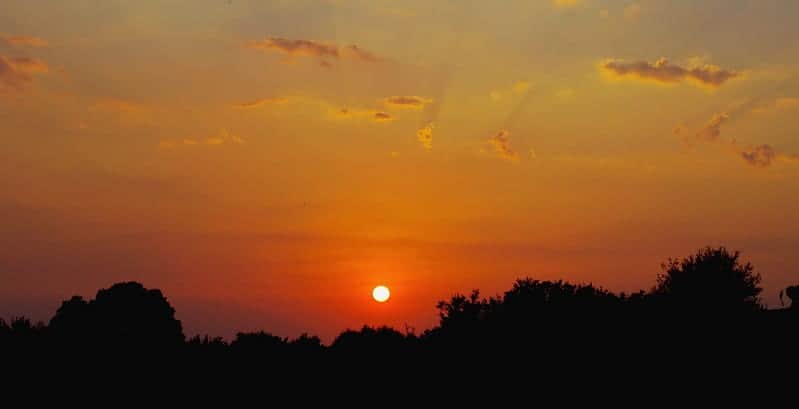
The clarity of the sky and the star above helps indicate future weather patterns as well.
It’s easy to see the difference between a hazy sky and a clear one, but did you know that a crystal clear nighttime sky indicates a crisp and brisk morning?
That might be pleasant in the summertime months, but a cold and brisk winter morning is something worth preparing for.
The Smell of the Rain
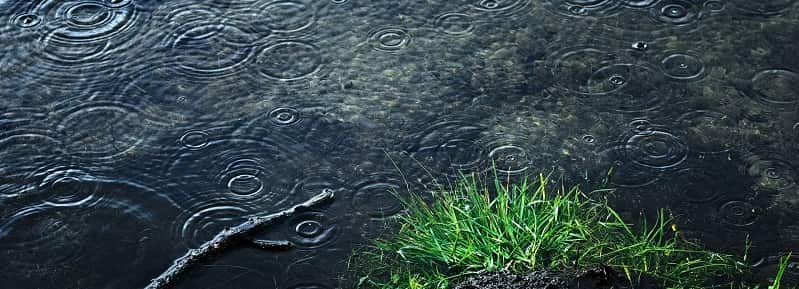
That pleasant smell of rain is a familiar indicator of rainfall, especially after a long dry spell. That smell of rain usually makes itself known after the rain falls, so how can that be helpful to read the weather?
Good question, and it’s got a situational answer; when I lived in Arizona, I could smell the rain from miles away. It was a reliable indicator that rain fell heavily somewhere not-too-far-away.
Having a heads-up that rain fell nearby in a desert is potentially a lifesaver: it could predict the recent arrival of drinking water, or warns of an impending flash flood in low lying areas.
Thunder and Lightning
The distance of time between between a lightning strike and the resulting thunder can help you determine how far away the strike was and, with that knowledge, indicate to you if the storm is moving closer or farther away.
Count the seconds between lightning and thunder and divide the result by 5 to determine how far away it was.
For example, lightning strikes, ten seconds go by, and then thunder rolls; divide 10 by 5 and you’ll know the lightning was a mere 2 miles away.
The Animals Tell a Lot
As a kid my uncle swore that when a herd of cows took cover underneath a tree it indicated incoming storms.
That’s kind of folksy, but it sure does hold itself up to scrutiny. I guess you just need to hang out around a lot of cows to see that this one rings true.
Birds
When birds, especially hawks, fly high in the air, it’s an indicator that the weather is fine and dandy, and will be.
Birdsong during the rain is a solid promise that the clouds are breaking and the rain will be letting up soon.
It sounds wild, but it’s a commonly encountered indicator at the end of a rainspell. Heck, it’s been raining all day today and I have birds singing for the last twenty minutes. And, sure enough, the clouds are breaking and the sun is peeping through.
Frogs

Frogs are another natural indicator of the weather. Because frogs rely heavily on rain and water to reproduce, they’re sensitive to promises of rain.
Spring peepers are the indicator that the winter has finally broke and warmer weather is here to stay, and meanwhile the last calls of the gray tree frog indicates that autumn is coming.
Most of us are familiar with spring peepers, but the call of the gray tree frog may be more of an unknown. Here it is below-
Don’t Forget the Bugs
Remember that commonly-cited prophet of winter’s length, the woolly bear caterpillar?
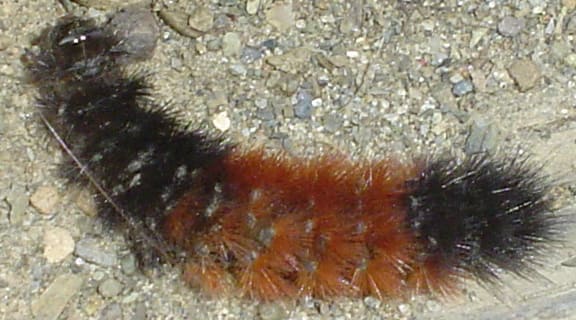
Legend has it that the longer the black section is, the more intense the winter will be. The more brown is present, the more mild winter’ll be.
That’s… not exactly true.
While there appears to be no indicator of a wooly bear’s winter forecasting abilities, they are a reliable hint of what the last winter was like. This kind of evidence of the past can be a valuable piece of knowledge if you find yourself in a new terrain.
Crickets can indicate the temperature in Fahrenheit, though the results are more general than specific. If you count the number of cricket chirps in 14 seconds and add 40, you’ll have the temperature in Fahrenheit… about.
And the Plants Too
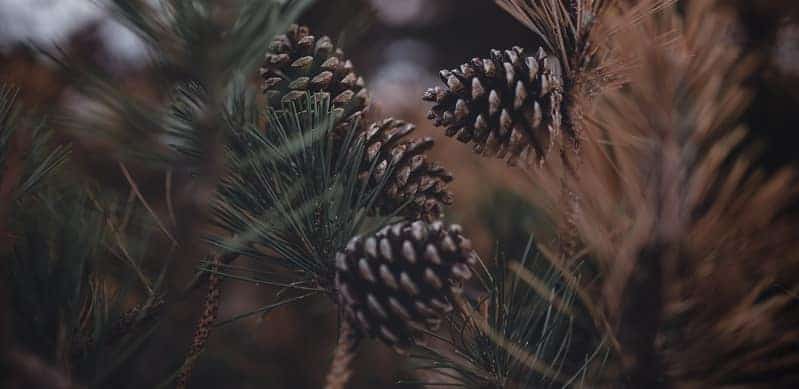
Leaves turning upside down often indicates rain, but this indicator isn’t exactly reliable.
Look for these more reliable indicators of what the weather is doing:
- Pine cones rely on dry, windy conditions to carry their seeds to new areas. The cones will flex with the weather; if the cones scales are open the weather is likely to be pleasant and promising. However, if the cones are pulled down tight, it indicates stormy weather is on the horizon. Remaining open during rainy weather is only going to ruin their chances at successfully reproducing.
- Likewise, most flowers rely on pleasant weather with active pollinators to successfully reproduce. Flowers like to remain closed during the nighttime, but if their petals remained closed during the day it’s an indicator of rainy weather. Just like the pine cone, wet and stormy weather ruins their chances to reproduce, so they need to protect themselves from these conditions.
Make Your Own Weather Tools
Barometers measure air pressure and are therefore a powerful tool in your arsenal for reading the weather.
It’s kind of cheating because it isn’t an entirely-natural tool or method for reading the weather, but it gets the job done.
Besides, why not learn how to do it? Could be valuable.
You can also make a wind vane to help determine the direction of the wind.
While seemingly unimportant, the direction of wind can help you read the signs and determine the likelihood of bad weather.
In the northern hemisphere winds tend to blow west to northeast, so if the wind is coming from the east instead it can indicate a stormcell forming.
Moving Forward With Your New Knowledge
I work outdoors for most of my week so I am especially sensitive to the weather and its changes. I’ve learned better than most to not rely on the weatherman.
The only forecast that means a damn is my own, and that’s a skill gathered from working outside and reading the signs I’ve presented above.
Spend enough time outdoors and you’ll become naturally proficient at reading the weather and knowing what direction it’s going to turn.
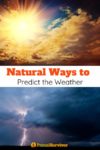


Very interesting.
Around hereabouts ol’ Mount Rainier will wear a hat, or at least, a cloud will sit upon its peak when its gonna rain the next day.